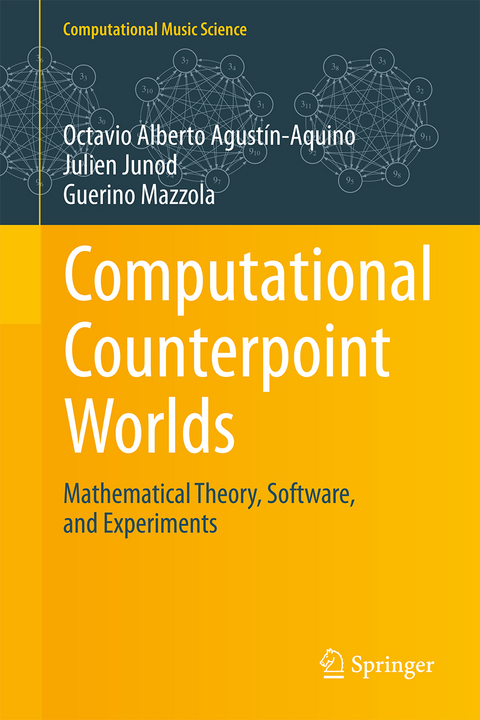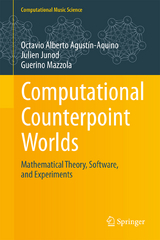Computational Counterpoint Worlds
Springer International Publishing (Verlag)
978-3-319-11235-0 (ISBN)
The mathematical theory of counterpoint was originally aimed at simulating the composition rules described in Johann Joseph Fux's Gradus ad Parnassum. It soon became apparent that the algebraic apparatus used in this model could also serve to define entirely new systems of rules for composition, generated by new choices of consonances and dissonances, which in turn lead to new restrictions governing the succession of intervals.
This is the first book bringing together recent developments and perspectives on mathematical counterpoint theory in detail. The authors include recent theoretical results on counterpoint worlds, the extension of counterpoint to microtonal pitch systems, the singular homology of counterpoint models, and the software implementation of contrapuntal models.
The book is suitable for graduates and researchers. A good command of algebra is a prerequisite for understanding the construction of the model.
Prof. Dr. Octavio Alberto Agustín Aquino received his Ph.D. in Mathematics from the Universidad Nacional Autónoma de Mexico in 2011. He is a lecturer in Universidad de la Cañada, Mexico. Dr. Julien Junod received his Ph.D. in Mathematics from the University of Zürich in 2010. He has worked as a statistician at the Institut Universitaire de Médecine Sociale et Préventive (IUMSP) of the Université de Lausanne since 2002. He participated in the development of counterpoint plug-ins for the Rubato platform and a website about scales used at the IRCAM. Prof. Dr. Guerino Mazzola earned his Ph.D. in Mathematics from Zurich University. He wrote the groundbreaking book The Topos of Music in 2002 - its formal language and models are used by leading researchers in Europe, India, Japan, and North America and have become a foundation of music software design. Prof. Mazzola has an appointment as professor in the School of Music at the College of Liberal Arts, University of Minnesota.
Counterpoint.- First-Species Model.- Preliminary Background.- Quasipolarities and Interval Dichotomies.- Towers of Counterpoint.- Graphs.- Transformations.- Implementation.- Second-Species Model.- Hypergesture Homology.- Glossary.- Index.
"It is really an example of putting theory into practice. Apart from illustrative examples and problems to solve, the authors' approach is highly algorithmic. ... In addition, the appendices are extremely helpful on mathematical basics, a guide to counterpoint worlds and strict digraphs, and the index is quite useful." (Jean Paul Van Bendegem, Mathematical Reviews, October, 2018)
“It is really an example of putting theory into practice. Apart from illustrative examples and problems to solve, the authors’ approach is highly algorithmic. … In addition, the appendices are extremely helpful on mathematical basics, a guide to counterpoint worlds and strict digraphs, and the index is quite useful.” (Jean Paul Van Bendegem, Mathematical Reviews, October, 2018)
| Erscheint lt. Verlag | 28.7.2015 |
|---|---|
| Reihe/Serie | Computational Music Science |
| Zusatzinfo | X, 220 p. 57 illus., 16 illus. in color. |
| Verlagsort | Cham |
| Sprache | englisch |
| Maße | 155 x 235 mm |
| Themenwelt | Kunst / Musik / Theater ► Musik |
| Geisteswissenschaften ► Sprach- / Literaturwissenschaft ► Literaturwissenschaft | |
| Mathematik / Informatik ► Informatik | |
| Sozialwissenschaften | |
| Schlagworte | composition software • Counterpoint • Exotic interval dichotomies • Homology • mathematical music theory • Microtones |
| ISBN-10 | 3-319-11235-X / 331911235X |
| ISBN-13 | 978-3-319-11235-0 / 9783319112350 |
| Zustand | Neuware |
| Haben Sie eine Frage zum Produkt? |
aus dem Bereich




